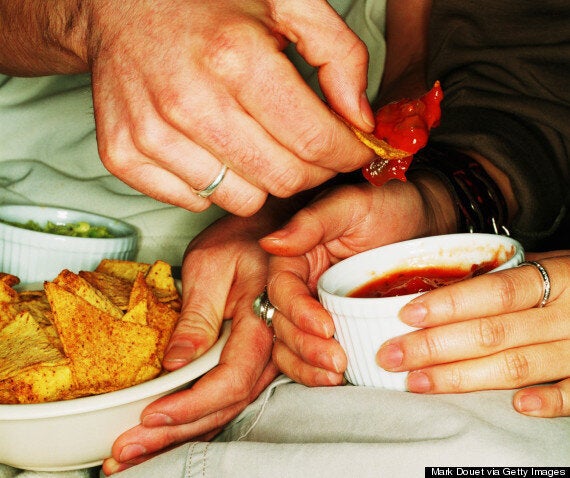Picture this: you head over to a friends' house for a chat and a glass of wine. You're not hungry but before you know it a family-bag size of crisps has been opened and devoured and it didn't even touch the sides. Sound familiar? Tell me about it, honey.
Well according to a new study, us absent-minded gluttons are not alone. In fact people perceive food that is either hard or have a rough texture to have fewer calories.
“We studied the link between how a food feels in your mouth and the amount we eat, the types of food we choose, and how many calories we think we are consuming,” write study authors, led by Dipayan Biswas, a marketing professor at the University of South Florida.

In five laboratory studies, the researchers asked participants to sample foods that were hard, soft, rough, or smooth and then measured calorie estimations for the food. In one study, participants were asked to watch and evaluate a series of television ads.
While watching the ads, cups filled with bite-sized brownie bits were provided to the participants as tokens of appreciation for their time.
Half of the participants were not asked anything about the brownies and the other half were asked a question about the calorie content of the brownies. Within each of these two groups, half of the participants received brownie bits that were soft and the other half received brownie bits that were hard.
Story continues below:
When the participants were not made to focus on the calorie content, they consumed a higher volume of brownies when they were soft (vs. hard). In contrast, when made to focus on the calorie content, the participants consumed a higher volume of brownies when they were hard (vs. soft).
Brands interested in promoting the health benefits of their products can emphasise texture, as well as drawing attention to low-calorie foods.
“Understanding how the texture of food can influence calorie perceptions, food choice, and consumption amount can help nudge consumers towards making healthier choices,” the authors conclude.
The study was published in Journal of Consumer Research.